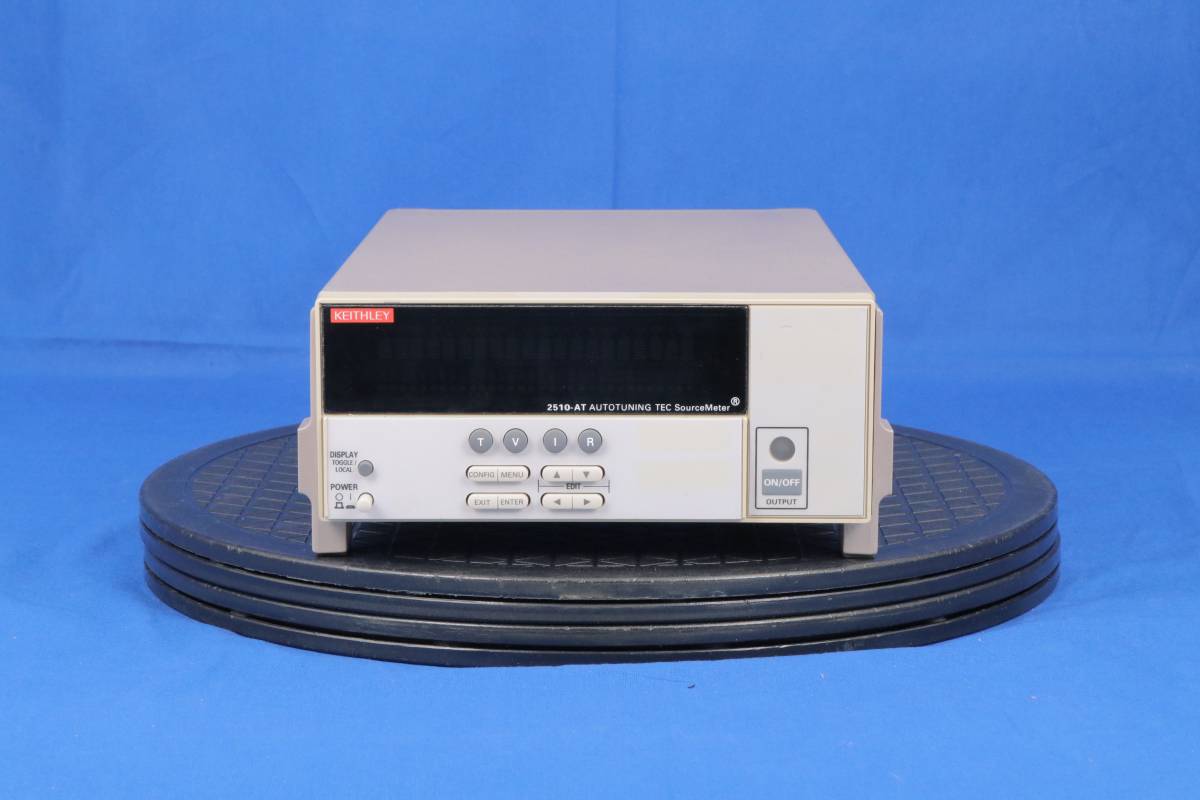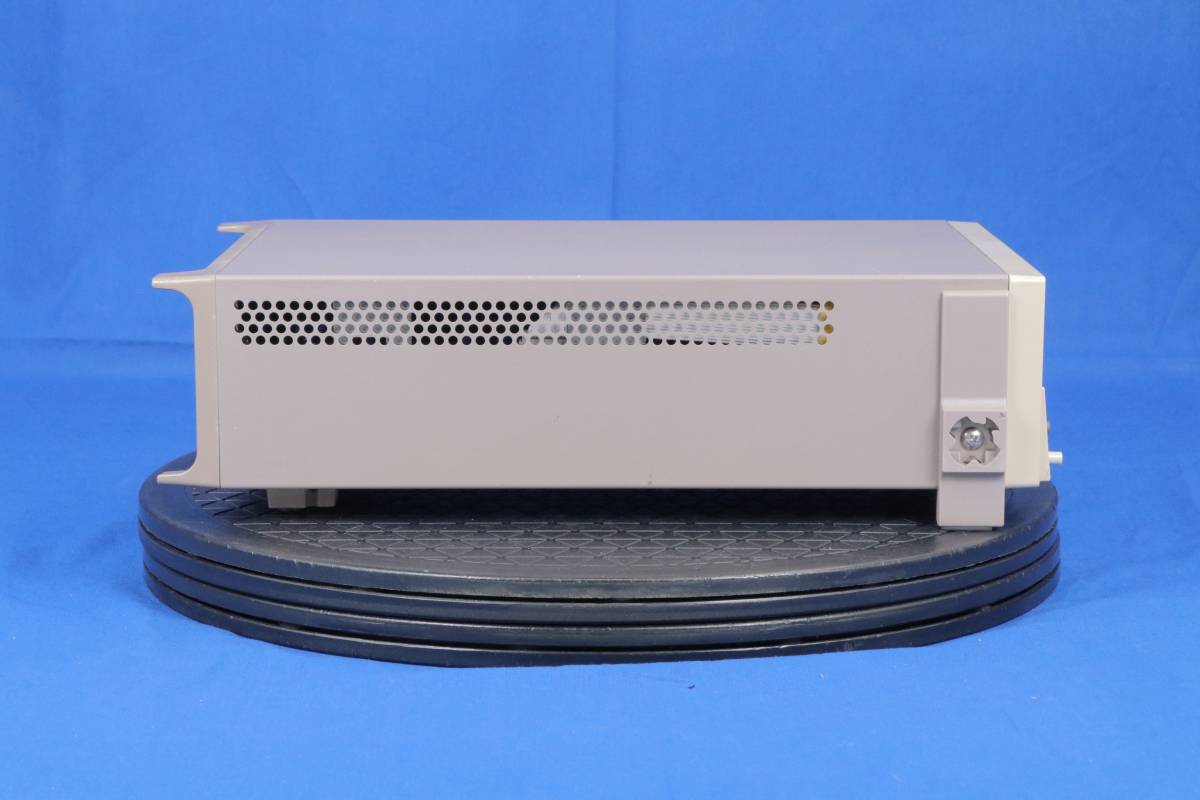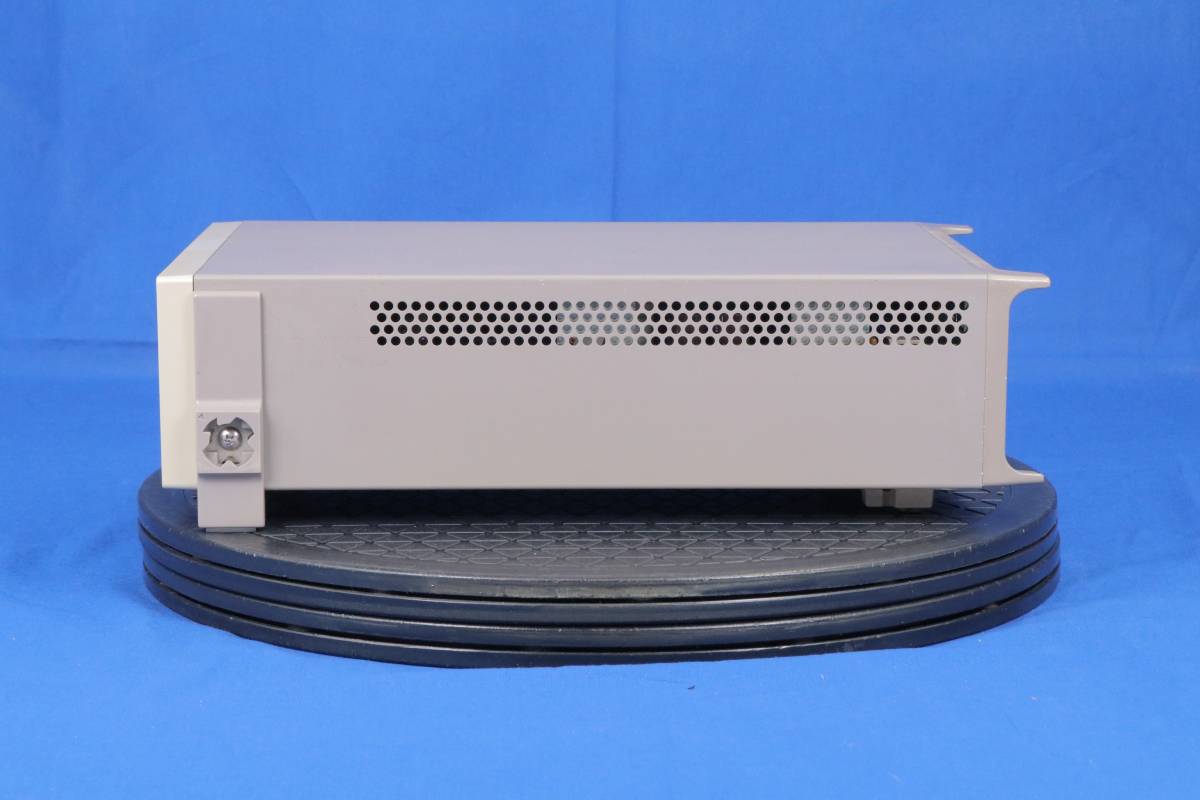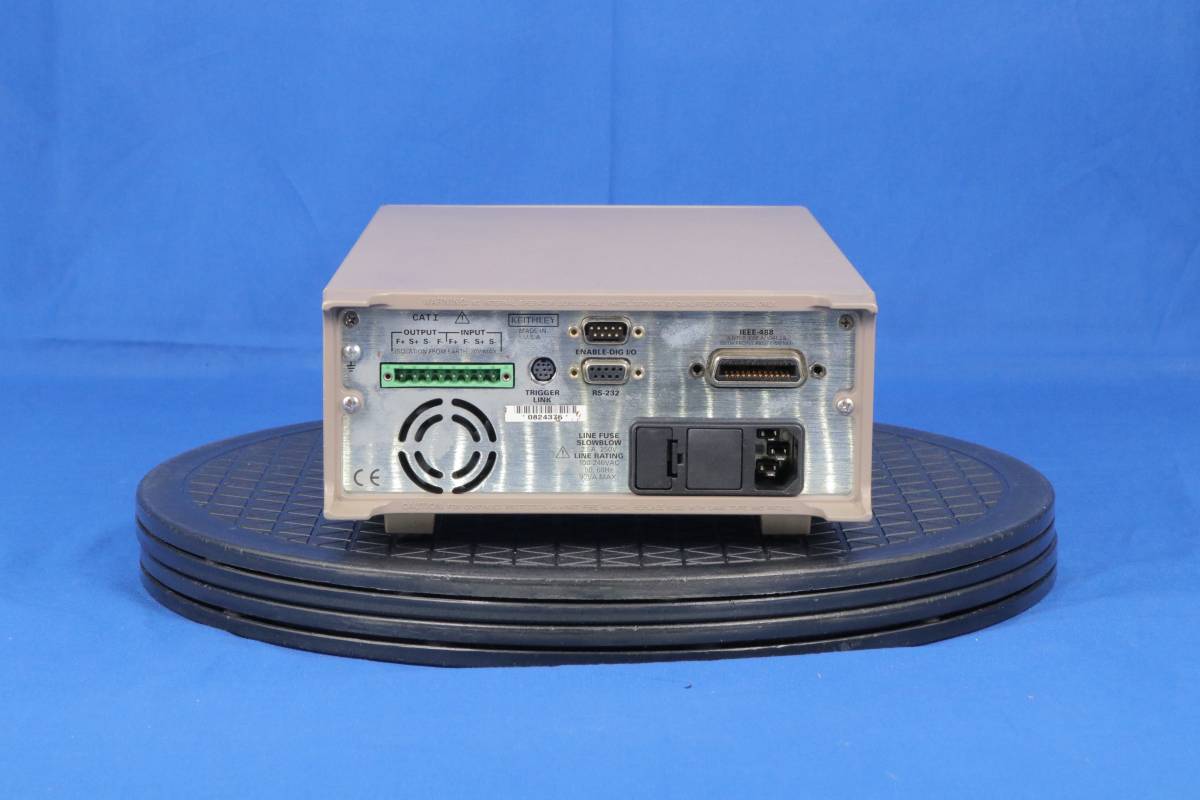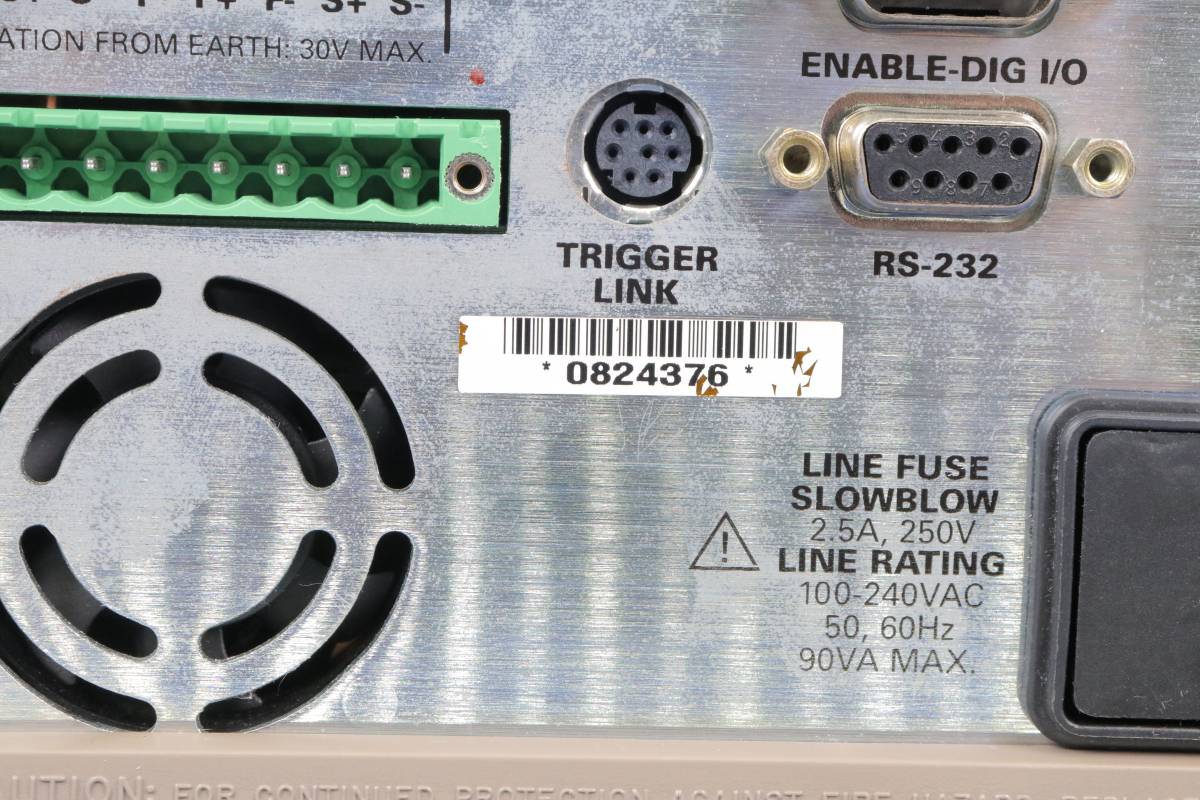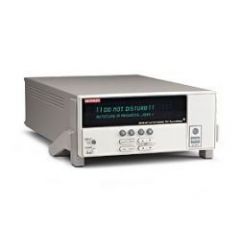
2510-AT Keithley Sourcemeter
50W Autotuning TEC SourceMeter
Fully digital P-I-D control
Autotuning capability for the thermal control loop
Designed to control temperature during laser diode module testing
REQUEST A QUOTE
2510-AT Keithley Sourcemeter
Detail
Additional Features:
50W Autotuning TEC SourceMeter
Fully digital P-I-D control
Autotuning capability for the thermal control loop
Designed to control temperature during laser diode module testing
Wide temperature setpoint range (-50°C to +225°C) and high setpoint resolution (±0.001°C) and stability (±0.005°C)
Compatible with a variety of temperature sensor inputs-thermistors, RTDs, and IC sensors
Maintains constant temperature, current, voltage, and sensor resistance
AC Ohms measurement function verifies integrity of TEC
Measures and displays TEC parameters during the control cycle
4-wire open/short lead detection for thermal feedback element
IEEE-488 and RS-232 interfaces
Compact, half-rack design
Accessories supplied: User's Manual, Input/Output Connector
The 2510-AT TEC SourceMeter instrument enhances Keithley's CW (Continuous Wave) test solution for high speed LIV (lightcurrent- voltage) testing of laser diode modules. This 50W bipolar instrument was developed in close cooperation with leading manufacturers of laser diode modules for fiberoptic telecommunications networks. Designed to ensure tight temperature control for the device under test, the Model 2510 was the first in a line of highly specialized instruments created for telecommunications laser diode testing. It brings together Keithley's expertise in high speed DC sourcing and measurement with the ability to control the operation of a laser diode module's Thermo- Electric Cooler or TEC (sometimes called a Peltier device) accurately.
The Model 2510-AT expands the capability of the Model 2510 by offering autotuning capability. P, I, and D (proportional, integral, and derivative) values for closed loop temperature control are determined by the instrument using a modified Zeigler-Nichols algorithm. This eliminates the need for users to determine the optimal values for these coefficients experimentally.
Option
Download
Video

